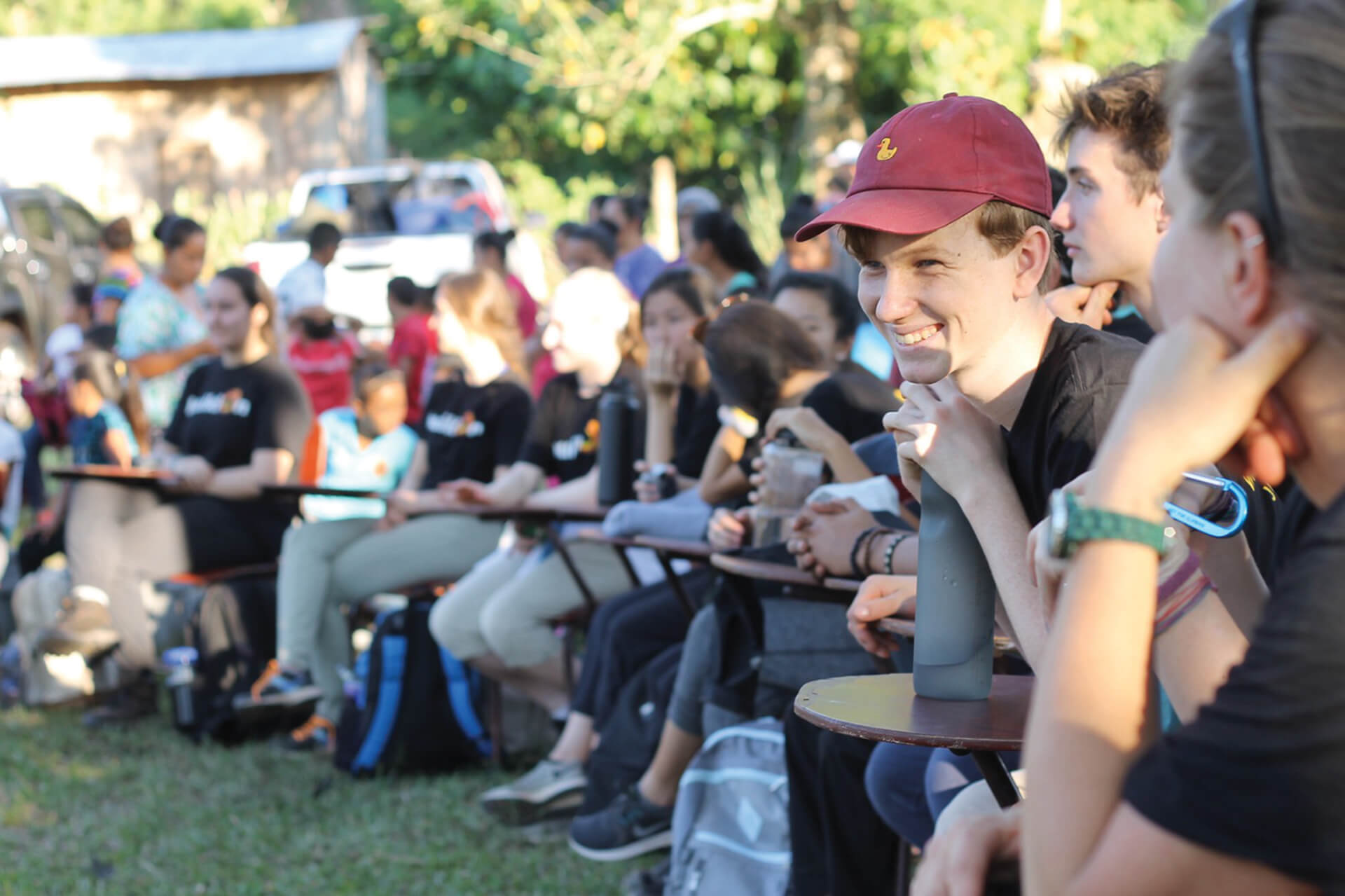Students Help Build School In Nicaragua

When the opportunity to go on a trek to build a school in another country was first brought up, I instantly felt a pull towards the idea, a desire to be part of it. This special chance at something new seemed exciting and different. The more I sat on the idea of applying to get chosen to go, I realized something pivotal: a trip like this was not going to be “fun.” It was going to be uncomfortable. I would probably miss home. I would feel emotional and surprised by what I saw. But that was the whole point.
BuildOn is a wonderful organization whose mission is to “break the cycle of poverty, illiteracy, and low expectations through service and education.” Today, the organization has been able to help build 1329 schools in underdeveloped countries. This number is growing.
To get into East Hampton’s story a little, originally the trip offered was to go to Nepal. A large group of juniors and a few sophomores filled out a lengthy application with questions asking about character traits, fundraising skills, and some random ones thrown in there. Because there was such a sizable pool of applications, our teacher and coordinator, Mr. Barbour, decided to add a trip before the one to Nepal. This trip was to Nicaragua, where 16 students, including me, ended up going to in April.
This trek would be hard to pull off because each student had to raise around $4000 in just a few months. Once the students going were chosen, we all began reaching out to local companies, friends, and family for donations. It sometimes felt nerve wracking, because money is never an easy thing to ask for. After what felt like ages of waiting for the day to come, we finally were ready to take off to a remote village in Nicaragua. With our stuffed trek bags on our backs and butterflies in our stomachs, we were ready for the journey.
Ironically, we did not end up leaving when we thought we would because of a snowstorm that hit, cancelling our flight. We ended up losing a day on the trip but made up for it by working extra hard. It took quite some time to get to the village, approximately two plane rides and around seven to eight more hours on a bumpy bus ride up the mountain. It felt surreal when we actually got there, and none of us knew what to expect.
When we arrived, we saw kids waving from across a river. One by one, we walked on top of a log to get to our village for the next week. The village held an opening ceremony for us with beautiful dancing, singing, and a production by the kids. The villagers were clearly extremely happy that we finally arrived to their home, and we were too. There was also a flutter of nerves in the air from both sides, but that subsided with time.
From that point, the students split into different size groups and got placed with host families. Although this makes sense, I did not put together the fact that the villagers would not speak English. The first few nights we spent with our host family, there was quite a significant language barrier. Although me and the two others in my house take Spanish at school, our knowledge of the language felt limited because of the way the villagers spoke fast-paced and completely in Spanish.
Everything in Nicaragua was completely different than I expected. The village was constantly shrilling with the sounds of bugs, and the landscape looked surreal because of the mountainous terrain and deep green brush. The houses were very small, our room put together for us with a makeshift divider and a few cots. The bathroom, or “latrine,” was a wooden hut several feet down from our house. The shower was outside with a bucket and some water.
Each morning, we would wake up early and begin to work side by side with the villagers. One of BuildOn’s policies is to ensure that the villagers are working as much as the students on the trek. This is very important to show that the school is not a gift but a collaborative effort. It is also important because after we leave, the village has to continue building what we started. What surprised me most is, despite the living conditions that the villagers faced every day, they genuinely seemed happy. It made me question everything I have ever known about possessions and what is truly important. It also highlighted the importance of family and tradition. I realized that more important than what I would get out of the experience was what the villagers would get, which was an opportunity for a better life.
After a few nights, I felt quite a strong connection with my host family and soon the village. Through the use of translators, we got to have personal talks with the villagers and discussed any questions they had about America and our lifestyle and we got to do the same. We also got to teach the kids some English and they showed us some of their school books and pencils. Before we came in, they had a very small school with only a couple teachers and so all of us were anxious to get the new school up and running.
At the end of our time in Nicaragua, our group felt sad that we were leaving and so did the village. My experience was so special and different. I got to do something completely new and out of my comfort zone. I made very close relationships with everyone on my team and many in the village. I ate a lot of rice and beans, pretty much for breakfast, lunch, and dinner. And we made a huge impact on the village and gave the children the opportunity for a higher level of education.
The experience was very humbling but also it made me realize that all the little problems in my life do not matter. I feel a little melancholy that I will most likely never visit the village again, but also very proud of what we did. If given the opportunity to do this again, I would. I’m sure I speak for many in the group of students that went to Nicaragua when I say that the experience was one I will never forget.










